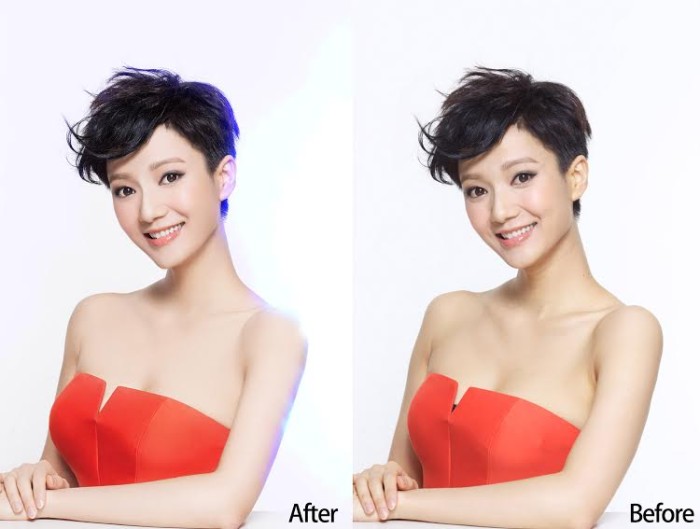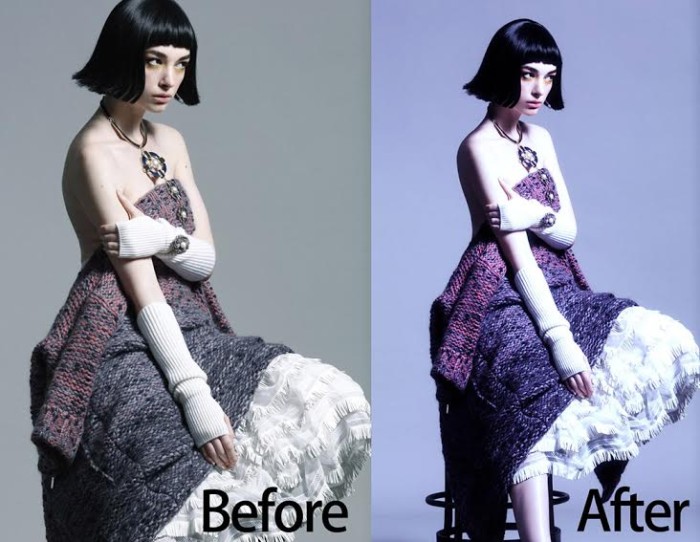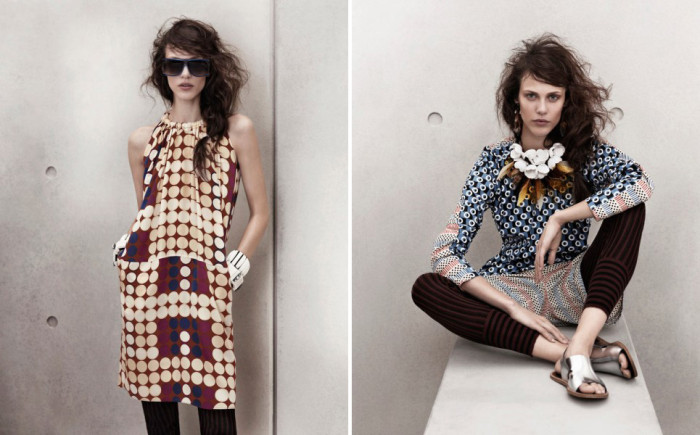
The ugly side of the beauty industry
share on
Dove’s “Campaign for Real Beauty” was one of the marketing industry’s best attempts yet to change the conversation about female beauty. But one decade later, images of unrealistically skinny models with flawless skin continue to give young women a false sense of identity.
So was it a failure?
In short, no. Dove’s attempt to give female consumers a more realistic view on beauty was a success and should stand as a constant reminder the industry has a big role to play in promoting positive and healthy images of women’s beauty.
But lately the “unrealistic” view has again been highlighted in many advertisements, particularly from luxury fashion labels and cosmetic brands around the globe, which have been accused of having breached their social responsibility by using unhealthy looking models to capture a female audience.
Two years ago, H&M’s Marni collection came under fire for using a “corpse-like” model in PR material. One seasonal ad from fashion label YSL also triggered a petition from a blogger against the YSL CEO to stop using “malnourished models” in ad campaigns.
It’s the same phenomenon in Hong Kong where slim figures and fair skin have always been the social standard of beauty.
Dettol, for example, recently rolled out a campaign featuring a local celebrity, for which design experts speculated her arms had been manipulated.
The creative agency behind the ad insisted the image was unedited, and instead, her slim figure was attributed to a work trip to Brazil.
Rita Ching, deputy executive director of The Women’s Foundation, believes that ad campaigns, particularly from fitness centres and skincare brands, often send a message not only to promote slim equals beautiful, but also to suggest slim is the only beauty.
“Most ad campaigns from fitness centres are sending unrealistic ideas of what a perfect figure should be to the public. Not only do they imply that slim, or even skinny, equals beautiful, they also say that less skinny models are inferior,” she says.
The recent ad campaign from fitness firm Slim Beauty depicting how local actress Kate Tsui beats her less-skinny rivals in a volleyball match, is downright irritating, Ching says.
“The ad sends a message that if your standard of beauty deviates from what the ad suggests, then you are ‘the others’. This kind of misleading ad can subtly alter the public’s idea of beauty, and it can even be damaging.”
Jean Kilbourne, author, filmmaker and media critic, who has been studying the feminism and advertising fields for about 40 years, agrees that advertising has gone too far to have “way too much emphasise” on the ideal standard of female beauty, which appears to be “too narrow”, especially in developed countries.
“The ideal images of beauty is giving incredible pressure on women to achieve a beauty ideal, which has always been impossible. We never see a woman considered beautiful that hasn’t been photoshopped to make her absolutely perfect and flawless,” she says.
“It gives huge pressure on women, achieving something which is completely unattainable.
“It’s not even vanity that makes women pursue this ideal. It’s because the stake not to follow the beauty standard is really high, that’s why the pressure is enormous.”
Noticeably, the ideal image of beauty, which has already influenced most female consumers, is also engulfing the younger generation.
“This kind of idealised images have a bad effect prominently on young people, who simply don’t realise the images are artificial,” Kilbourne says.
“So they may think if they don’t look like those models in ads, they are failures,”
Social associations such as The Women’s Foundation has been closely in touch with school teenagers on research projects.
Ching reveals that with a lot of school bullying cases, in which victims usually are chubby or fat girls, they are teased as “other creatures” for being a bit fat.
“When we ask them where did this idea of ‘slim is beauty’ come from, most of them say they have learned it from magazines or television,” Ching says.
“Celebrity endorsement is one of the culprits of the worsening situation. Hong Kong is a celebrity driven society and our social mindset is hugely influenced by celebrities.
“Audiences are subconsciously being fed with the idea that a skinny figure is king, with a string of identical ad campaigns featuring skinny celebrities in magazines or on television. But quality audiences who have the ability to judge and to filter what they are fed, remains a minority.”
Despite TV shows, videos and the celebrity effect, the role of advertising in creating this “ideal” female is huge, Kilbourne believes.
“Advertising is by far, the most powerful aspect in all forms of mass media. They are barraging us with these images on a daily basis. I am not saying that advertisers are being tempted to create unrealistic images. But this is the side product they are selling.”
A significant part of this harmful beauty ideology is caused by negative cumulative effect.
“If we see only one to two images of extremely thin models, no one would have noticed. But all we ever see are ads that promote one particular ‘desirable’ body type, often an extremely thin body type that only 5% of women in the globe have. If this is all we perceive every day, this is what is called the cumulative impact,” she explains.
“It creates a certain beauty standard for audiences to follow in order to be considered attractive. Hence, it should not be the intent of individual advertisers to promote these products.
“It’s the cumulative impact that affects the public so deeply.”
She says advertisers have an inevitable innate purpose to create anxieties on certain aspects, including age, skin quality and body shape, to tempt consumers to buy their products.
“Part of the intent of advertising is to create a certain amount of anxiety, that’s understandable; but it has now become much more overwhelming than ever before.”
Retouched images can be so impactful and deceptive, largely thanks to advanced technology such as photoshops. This objectionable post-production job is often filtered down to production houses.
Shu Leung, producer at Wow Productions, a production house behind many big labels including Timberland, Shanghai Tang, and Enicar, admits all advertising it processes has been, on a certain level, retouched.
"We tend to keep the original image as much as possible. But when you remove their pimples, for instance, their freckles become too obvious, so that you have to also remove their freckles. Often you almost have to remove every flaw at the end.”

Photo courtesy to Dynamic Innovation Ltd.
Apart from getting picky on facial imperfection and body shapes, what’s even more heavily edited is hair. Eye-lashes to hair, particularly for hair products and cosmetic brands, are usually completely computer-generated to achieve what they called “perfection”.
Interestingly, one justification for the heavy retouched images, is they are “left with no alternative”.
“Indeed, there’s a trend of raw beauty emerging in Western countries,” Leung says.
“Fashion houses or cosmetic brands in Hong Kong are interested in following this trend. But the problem is that Hong Kong has a lack of pretty models who have that kind of natural beauty.
“Top models tend to stay in the US or Europe, they seldom come to Hong Kong. And most of the local firms just can’t afford them.”

Photo courtesy to Dynamic Innovation Ltd.
But what makes total sense in locals’ mindset, appears “insulting” to Kilbourne.
“What they are really saying is that they can’t find a woman that looks like the ideal image of beauty that we’ve been surrounded with all the time. It almost proves the point there is an ideal image of beauty that is so narrow for women.”
To subvert this, education plays a key role.
Kilbourne says the education system should take up the duties to educate young generations of how advertising works in general, as well as the use of digital manipulation in advertising.
“That may sound obvious. But the truth is many people don’t even realise that.”
Outside Hong Kong, some brands are pioneering to try to redefine the beauty standard that seems to be a foregone conclusion.
Dove’s Beauty Patch Experiment, for example, is a social experiment trying to alter how women perceive themselves. A group of women were invited to put a beauty patch named “RB-X” on their arms for two weeks, a product they were told would “enhance the way they perceive their own beauty”.
“Some people may criticise these ads as PR strategies that are used to stand out from the crowd,” says Kilbourne, “which may be true, but it doesn’t really matter. What matters is that people are getting that message”.
While the world is becoming a global marketplace, more and more about marketing and advertising, it has some impactful side effects that advertisers should take into consideration to reduce the harm, she says.
“It’s an overwhelming force, it’s almost impossible to prevent all of the harm. But at least advertisers should extend the definition of beauty to get beyond the very narrow that advertising has created,” Kilbourne suggests.
Ching adds: “Today’s brands need to seek a unique identity and a valuable brand character for sustainable business development. At the end of the day, the core principle of advertising is to create something new and inspiring, and ultimately, redefining the social norms.
“I hope brands can stop following suit of what others do, or what the majority believe, and to eye more angles to interpret the concept of beauty.”
share on
Free newsletter
Get the daily lowdown on Asia's top marketing stories.
We break down the big and messy topics of the day so you're updated on the most important developments in Asia's marketing development – for free.
subscribe now open in new window


